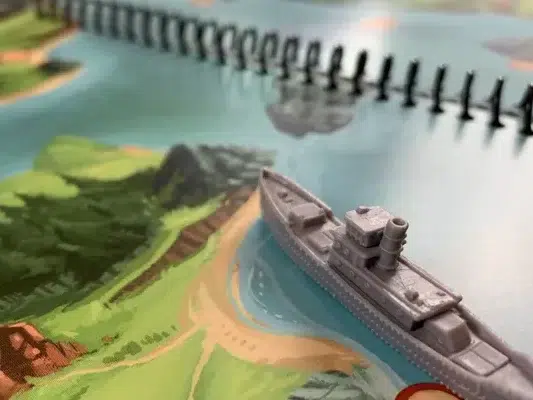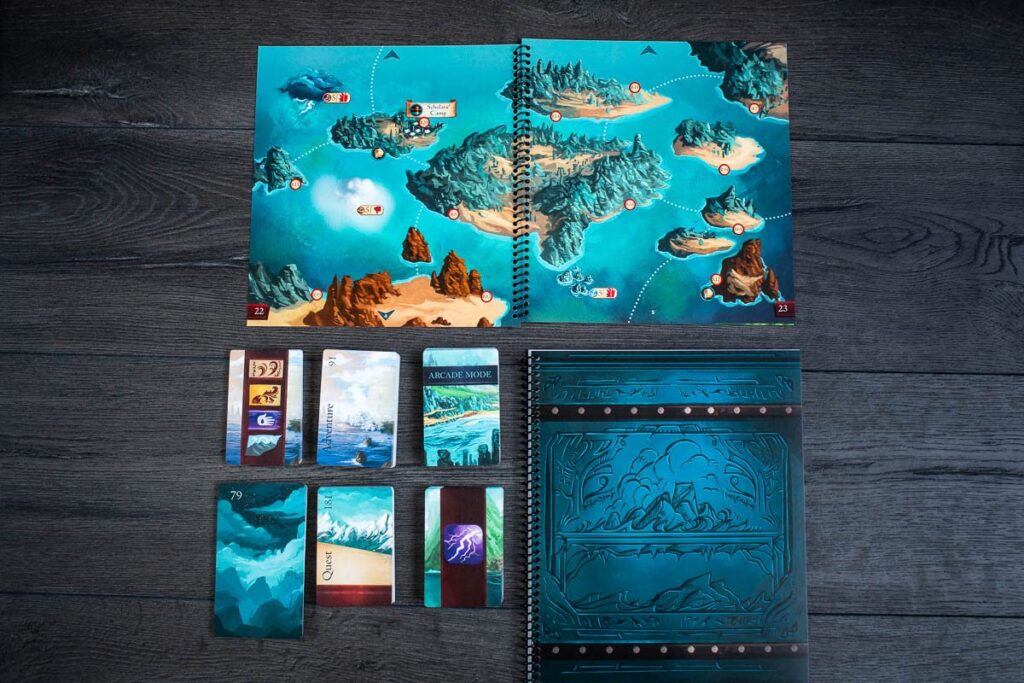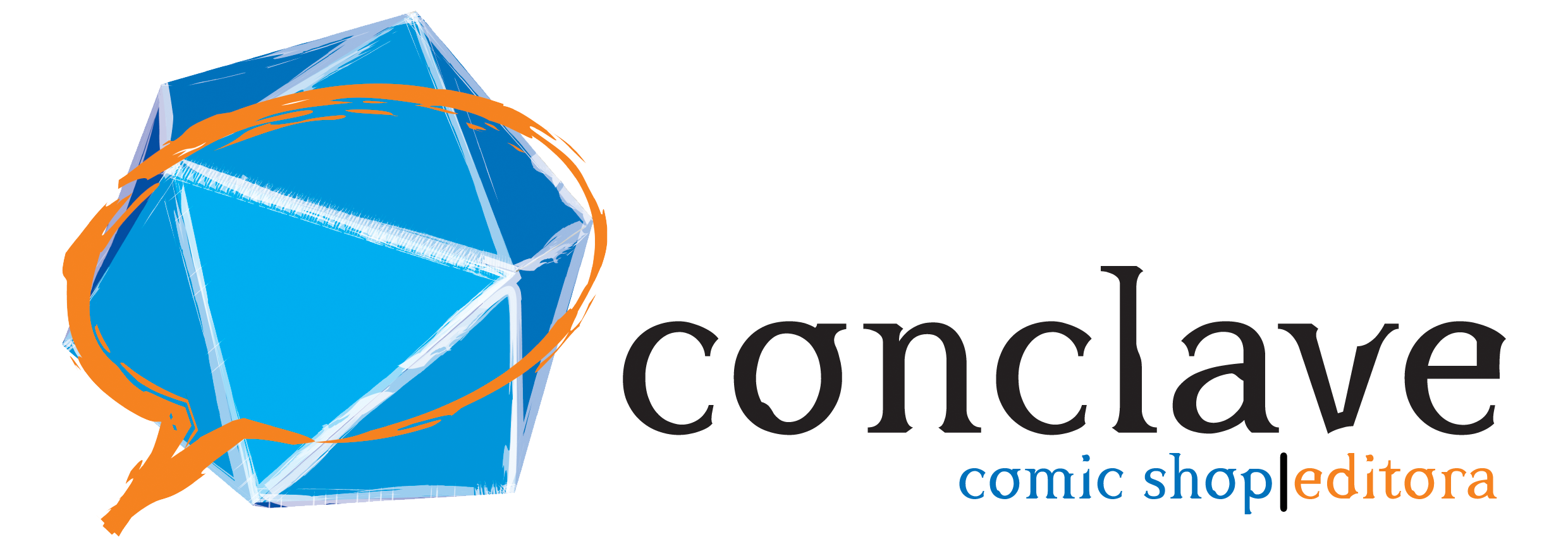By Kyle Gormley
Review (What I thought) of Sleeping Gods
“This is the Wandering Sea. The gods brought you here, and you must awaken them if you want to return home.” With these words your adventure begins and, in my opinion, this adventure is part of one of the best board games ever produced.
Set in 1929, you and 3 friends play as the Manticore crew. Your ship was hit by a storm while traveling from Hong Kong to New York, and now you find yourself stranded in a strange land with only one task that will lead you home: you must awaken the Sleeping Gods.
This is a campaign game, played over multiple sessions as you explore the world. You will go through quests, fight strange monsters and meet a myriad of characters. Each of them will shape your unique journey.
A Captain and Her Crew
The first big difference from most other campaign games is that in this one each player will control several characters during the course of the campaign. The Manticore is commanded by Sofi Odessa and crewed by 8 other people (each with their own personality). You'll have to divide these roles as equally as possible between the players, with Sofi always being controlled by whoever is playing the current turn.
However, many actions you perform during the game will require skill checks and anyone can get involved in them, meaning you'll always be busy when another player takes their turn. This also means that you'll be equally immersed in how each character improves and evolves throughout the game.
These improvements come in the form of level cards, which are permanent upgrades that cost XP; and abilities, which are temporary and only cost command tokens to equip. And then you ask me: what are tokens? Well let me explain...
Command & Conquer
Each game turn is divided into three phases: the ship phase, drawing an event card, and the action phase. During the ship phase you will have to perform one of six 'ship phases':
Each of these actions will provide you with a benefit (heal one of your characters, more skill cards, etc.) and set an amount of command tokens. These tokens are used for all sorts of things:
- Each of your items has a command cost and can only be activated by placing multiple tokens on them.
- If you wish to help another character during a skill check, you must discard a token.
- Each character has their own skills (shown on the respective board) that can be activated using tokens.
- Some ability cards require tokens to be spent for their powers to activate.
The beauty of the game's system comes from the need for you to be very creative. The supply of these tokens is limited, so if you're supposed to collect some of them on your turn and there aren't any left, that means you're out of luck.
One of the ship's actions returns all tokens back to the supply, but you cannot perform the same ship's action two turns in a row. This means you always need to be one step ahead in your planning. Will you use a certain item now, knowing that you won't be able to get the tokens back two turns in a row (and therefore won't be able to use it again)? What if you want to save some for a more difficult skill check or surprise combat?
Each decision is complicated and requires a lot of dialogue between players in order to have plans for future actions in your next adventure.

We're Gonna Need a Bigger Boat
Speaking of adventure, it's time to talk about what this game is really about. Most of the time in Sleeping Gods will be spent navigating through the world map (a beautiful illustrated atlas) and going through all sorts of weird and wonderful quests.
The game comes with a 170-page storybook; and there are more than 200 places to be visited on the map. Each one will take you on something like a choose your own mini-adventure, in which your crew will have to make tough decisions, make skill checks, and probably face off against monsters.
Many of these stories are presented in the form of mission letters, which have a keyword and a short summary of the mission in question. In terms of mechanics, this means that when exploring, the lorebook should call into question options that require these keywords (ie 'you see some markings on the cave wall - if you have the PLATE keyword, go to option 2. Otherwise go to option 3').
This works on several levels: if you have the relevant keyword, the feeling of actually being on a mission and, who knows, achieving the outcome of something you started hours ago is fantastic. But if you don't have the keyword, the rulebook encourages you to write it down on the map (a full scale version of the atlas), so you can come back later if you start the relevant quest.
By the end of our campaign, our map was completely filled with words, clues and hints for future games. This is totally thematic and, despite being a simple touch, I hope other games do something like this too.
The other brilliant thing about this mechanic is that, unlike some games in this genre (I'm talking about you, Tainted Grail), the story is never just about skill checks. If you fail a roll, something bad will eventually happen (lose health, gain fatigue, etc.), but the narrative continues.
This makes your decisions much more liberating, since you don't just depend on getting lucky when you draw a card to advance in the mission in question. You can still enjoy the story, even if your character comes out the other end a little bruised.
monster hunters
I've mentioned combat a few times here; as such, it might be worth explaining how fights work in the game.
Each encounter that results in combat begins with the player in the act of drawing quest-specific monsters from a face-down deck (the rulebook instructs not to look at these cards beforehand), shuffle them, and then place them. in a row.
Each monster has an attack and defense stat, as well as a 3×3 table that shows assorted symbols. During your turn, you'll activate one of your characters, draw a fate card, and add the shown value to your accuracy stat (which can be modified by whatever weapon, item, or skill you want to use). If the total is equal to or greater than the enemy's defense, you hit!
However, it's not as simple as just reducing the monster's HT until it dies. Every monster has a certain number of hearts somewhere on its table and you need to cover all of them in order to defeat it. In this way, combat becomes a kind of puzzle that you solve over several turns.
Let's say you deal 4 damage on your turn: you have to allocate 4 damage tokens on your table, but each of them has to be adjacent to the previously placed token. This means that you need to have good tactics when choosing where to inflict damage. It's usually not possible to kill a monster with just one hit, so you'll want to make sure you're helping the next player as much as possible.
Combine this with the fact that monsters also have other effects on their tables (damage bonuses, status effects, etc.) that prevent you from covering locations and you'll see just how difficult your decisions can be each round.

About Space & Time
One of the most interesting aspects of Sleeping Gods is that the campaign always has the same duration, but there is no predefined path to follow during your stay in this world.
As I mentioned before, you will draw an event card every turn of the game and the event deck will act as a kind of timer. You start the game by building a deck of 18 cards and once that's gone, you'll face an event described in the lorebook. Do this two more times for a total of 54 events/turns and the game will end.
However, there is no definitive 'win condition'. There are 13 different endings to the story, so the choices you make will always lead somewhere. The object of the game is to find as many totems as possible, but it's up to you how you'll do it.
Do you want to focus on a few atlas sessions and visit all locations to complete all quests? Or do you just want to sail the seas and see what happens in order to just learn more about the world and plan a future foray?
During my campaign, there were 2 full pages of the atlas that we never saw. I have no idea what awaits me in the freezing north or any of the 160 locations we didn't have time to explore, but I can't wait to find out what's in store.
A Confession
At this point, I should probably share a secret: We played the campaign on easy mode. After the game was released, Ryan Laukat added an official easy level variant to the game (you can find it on the BGG/Red Raven websites) that will help new players. You start the game with few resources, extra money and 20XP, which can make the previous game easier to manage.
It's not that I think the game is particularly unfair on normal mode or that any rules are unbalanced or unfunny. It's just that we wanted to make the most of the story without worrying too much about being defeated in the four corners of the world.
That said, it's not an easy game. We had our fair share of tough fights during our adventure and failed several skill checks. I know a lot of people who like the challenging nature of some campaign games, but I think it's worth knowing that there are always options, and you have to know how to use them.
What a wonderful World!
Last but not least, I need to talk about the aesthetics of this game. Simply put: it's beautiful!
Every component is fantastic:
- The atlas is filled with characters with little touches that help guide us through missions.
- The characters are unique, with passionate illustrations (and backstories) on their boards.
- The monster deck is full of wild and beautiful creatures, each one beautifully hand-drawn.
- All tokens are wonderfully sensitive to the touch, whether they are made of cardboard or wood.
- The content allocation solution is something amazing, most notably a magnetic box that serves to store all quests and adventure cards.
The love and attention to detail they brought to the game world is, frankly, insane. I think Ryan Laukat must be a wizard.
The Adventure Is Out There!
With all that being said, it goes without saying that I absolutely recommend this game.
If I think he is for all audiences? Not all. If you don't like campaign/story games, this one won't change your mind. It's definitely less complex than some others on the market, but it's still a great investment. Our first campaign took about 20 hours, and we ended up leaving it on the table for 2 weeks. The idea of storing the components and then having to assemble the table every time we went to resume the campaign did not sit well with the players.
However, if you enjoy this type of game and want to get involved in a new adventure, I really don't think you'll find anything better than this one. From production to story and mechanics, this game delivers it all.
And that's not even counting the Tides Of Ruin expansion, which expands the map and adds over 100 new locations to explore. There is also a Dungeon expansion that should be available this year, which will add even more replayability.
In short: Sleeping Gods is the best game I played in 2021.
Translated and adapted by Marcelo Oliveira in https://www.board-game.co.uk/sleeping-gods-review/






1 thought on “Review (What I thought) of Sleeping Gods”
Too excited for mine to arrive